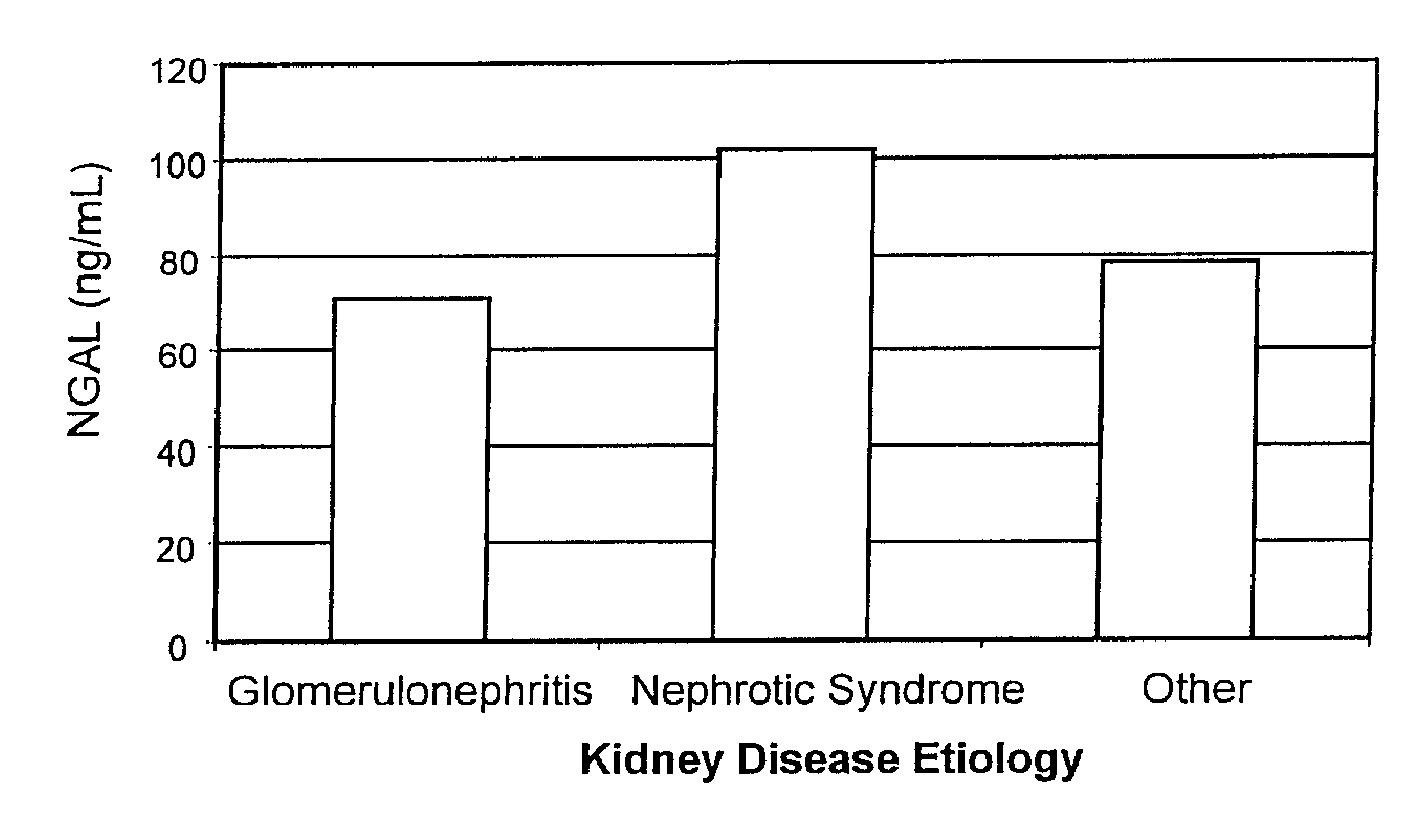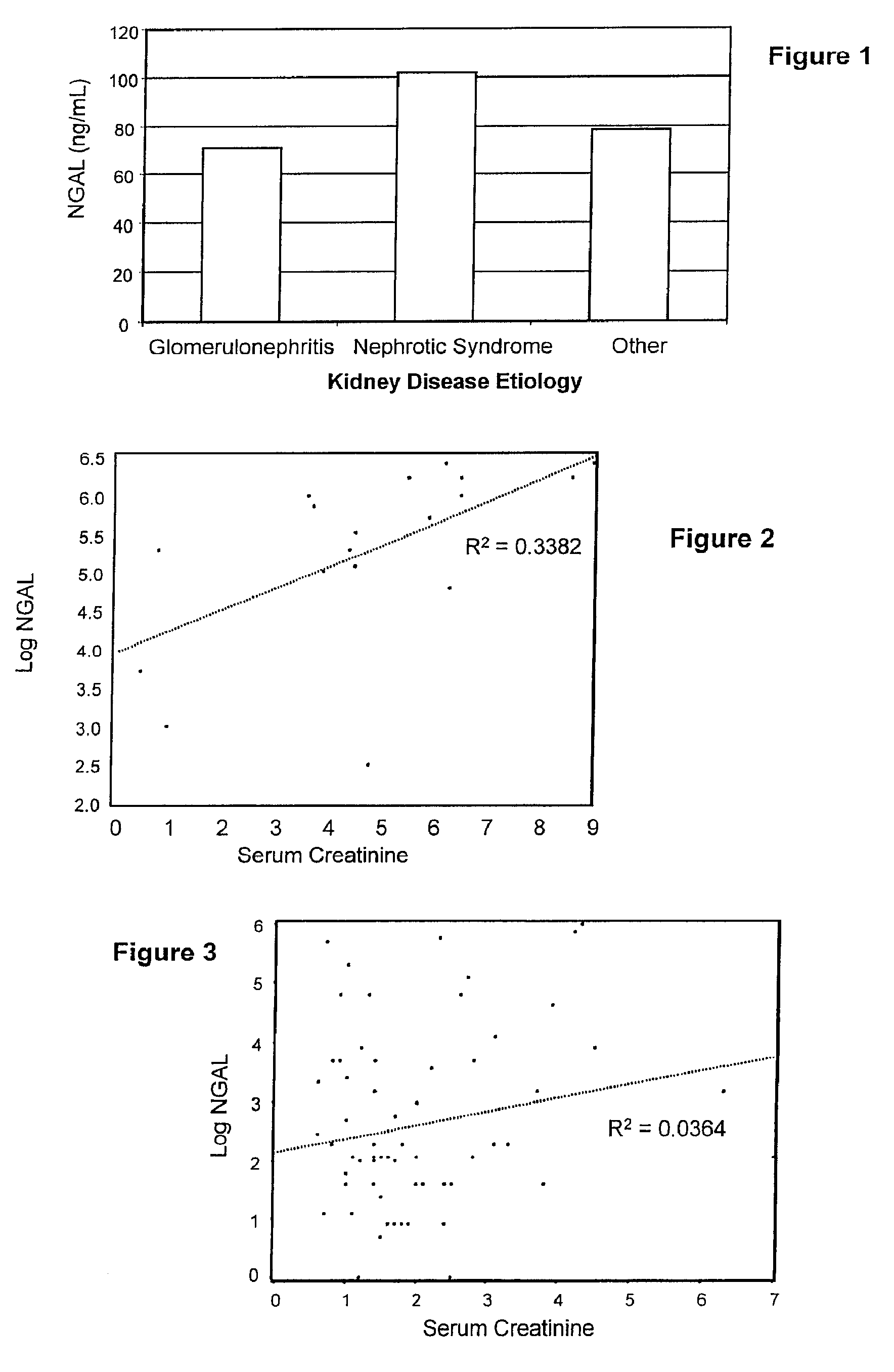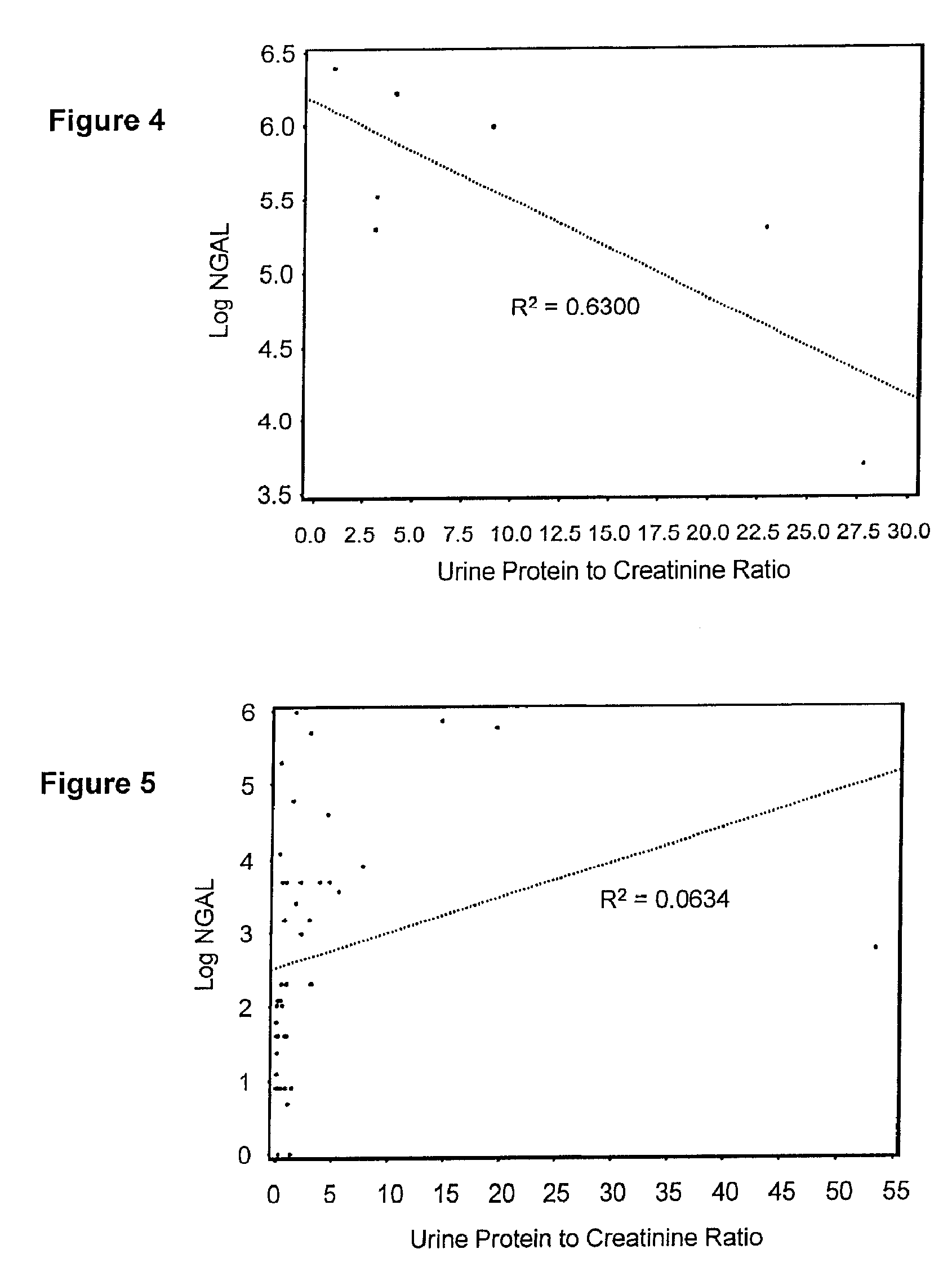Diagnosis and monitoring of chronic renal disease using ngal
a technology of chronic renal disease and diagnosis and monitoring, applied in the field of ngal, can solve the problems of high disease progression rate, limited ability to recognize early kidney disease, and diagnosis of kidney diseas
- Summary
- Abstract
- Description
- Claims
- Application Information
AI Technical Summary
Benefits of technology
Problems solved by technology
Method used
Image
Examples
example 1
Assays and Methods
[0110] a. NGAL Elisa—Serum
[0111] Unless otherwise specified, the level of NGAL in serum is assayed with an ELISA as follows. Microtiter plates are coated overnight at 4° C. with a mouse monoclonal antibody raised against human NGAL (#HYB2 11-05, Antibody Shop, Gentofte, Denmark). All subsequent steps were performed at room temperature. Plates are blocked with buffer containing 1% BSA, coated with 100 μl of serum or standards (NGAL concentrations ranging from 1-1000 ng / ml), and incubated with a biotinylated monoclonal antibody against human NGAL (#HYB211-01B, Antibody Shop) followed by avidin-conjugated HRP (Dako, Carpenteria, Calif., USA). TMB substrate (BD Biosciences, San Jose, Calif.) is added for color development, which is read after 30 min at 450 nm with a microplate reader (Benchmark Plus, BioRad, Hercules, Calif., USA). The inter- and intra-assay coefficient variations are 5-10%. All measurements are made in triplicate, and in a blinded fashion. Serum NGA...
example 2
(a) Urinary NGAL Expression in a Population of CKD Patients
[0116] Urinary NGAL levels were assessed in 91 outpatients from the general nephrology clinic at Columbia University Medical Center (CUMC) that were referred by outside nephrologists for treatment consultation. These were patients with kidney disease resulting from a spectrum of etiologies. Table 2 below shows their baseline characteristics. Mean age was 49.2 years and about half the cohort was female. The correlation coefficient between NGAL and other continuous parameters was determined by log transforming NGAL, along with the serum creatinine, urine albumin to creatinine ratio (UACR) and the total urinary protein. Log NGAL was found to correlate with log serum creatinine at the baseline visit (r=0.54, p<0.0001), the change in serum creatinine between the baseline and follow-up visit (r=0.49, p=0.002), GFR (r=−0.22, p=0.04), log UACR (r=0.55, p<0.0001), and the log of the total urinary protein (r=0.61, p=<0.0001). There w...
example 3
Results of Patient Studies (Serum)
[0126] a. Circulating NGAL Expression in a Population of CRD Patients
[0127] Forty five consecutive children and adolescents (ages 6-21 years) with CRD stages 2-4 (measured GFR=15-89 mL / min / 1.73 m2) were prospectively recruited between 2002 and 2004. The stages of CRD were defined according to the K / DOQI guidelines. None of the subjects received a kidney transplant during the study or were post-transplant. The medical records were reviewed for demographics, cause and duration of CRD, and medications.
[0128] Serum creatinine levels were measured using a kinetic, reflectance spectrophotometric assay (Vitros® 950 Chemistry System from Ortho Clinical Diagnostics, Raritan, N.J., USA) as part of routine care. Estimated GFR (cGFR) was calculated using the Schwartz formula. Kidney function at the time of enrollment in the study was also determined by measuring GFR using a single intravenous injection of loversol injection 74% (Optiray 350®, Mallinckrodt In...
PUM
| Property | Measurement | Unit |
|---|---|---|
| concentration | aaaaa | aaaaa |
| concentration | aaaaa | aaaaa |
| concentration | aaaaa | aaaaa |
Abstract
Description
Claims
Application Information
 Login to View More
Login to View More - R&D
- Intellectual Property
- Life Sciences
- Materials
- Tech Scout
- Unparalleled Data Quality
- Higher Quality Content
- 60% Fewer Hallucinations
Browse by: Latest US Patents, China's latest patents, Technical Efficacy Thesaurus, Application Domain, Technology Topic, Popular Technical Reports.
© 2025 PatSnap. All rights reserved.Legal|Privacy policy|Modern Slavery Act Transparency Statement|Sitemap|About US| Contact US: help@patsnap.com



